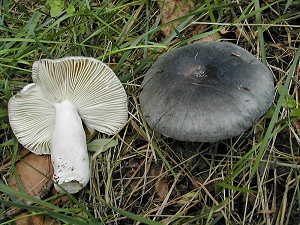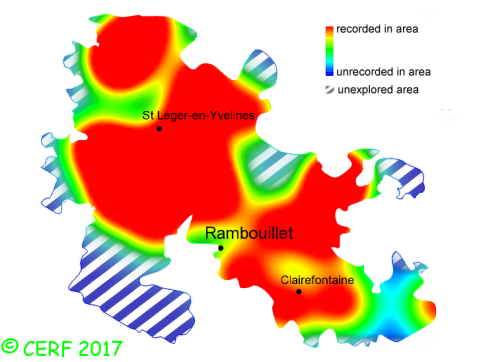| Russula cyanoxantha (Schaeff.) Fr. |
|
|
|
|
|
|
The cap is with variable shades : blue, green, Bordeaux, grey - essentially violet, globular at first, then convex, expanded and finally depressed; its margin is striate when mature. The cap surface is smooth, slightly viscid in wet weather. The stem is white, sometimes washed with lilac, cylindrical or slightly tapering at its base, without ring. The flesh is white, sometimes flushed with grey-brown in the stem, unchanging; its taste is mild, sometimes slightly peppery; the odour is not distinctive; its texture is grainy (breaking like a chalk stick). The gills are white to cream, free to adnate, crowded (nb of gills per 90° ~ 35 ). The spore print is whitish. This species is mycorrhizal. It grows on the ground, in broad-leaved and coniferous woods, on a rather acid or slightly calcareous soil, with birch, oak, beech, spruce, pine, hornbeam, chestnut. The fruiting period takes place from April to December.
Chemical tests : flesh becoming very slowly greenish (or no reaction) when in contact with iron sulphate; reaction of cap cystidia very faint or negative to sulpho-vanillin; Ga´ac moderate.. Distinctive features : white to cream gills, flexible and non brittle, greasy to the touch; cap surface with shades of purple, green and blue; white flesh; green or no reaction to iron sulphate Russula cyanoxantha is frequent and very widely present in the forest of Rambouillet, and is very frequent, more generally speaking . | ||
|
page updated on 14/01/18

